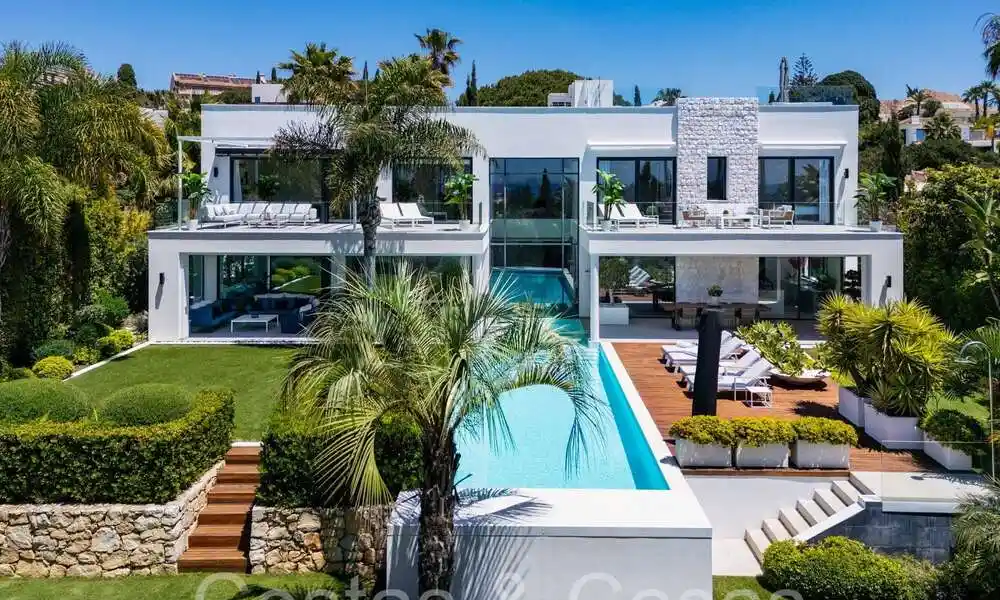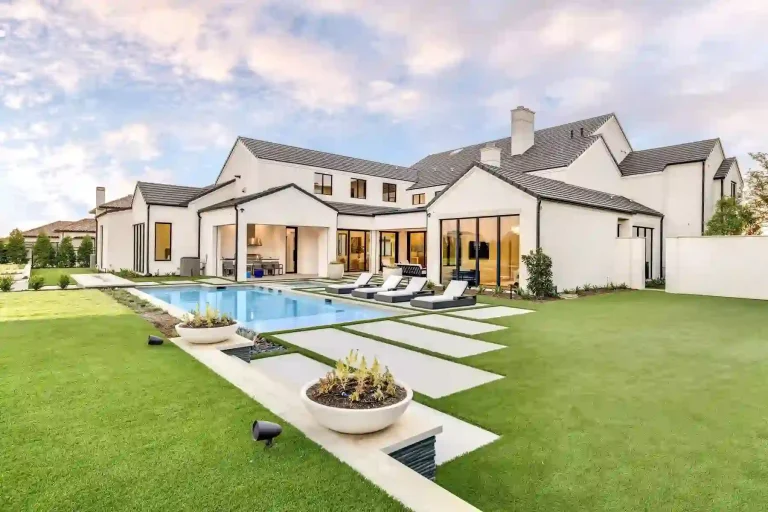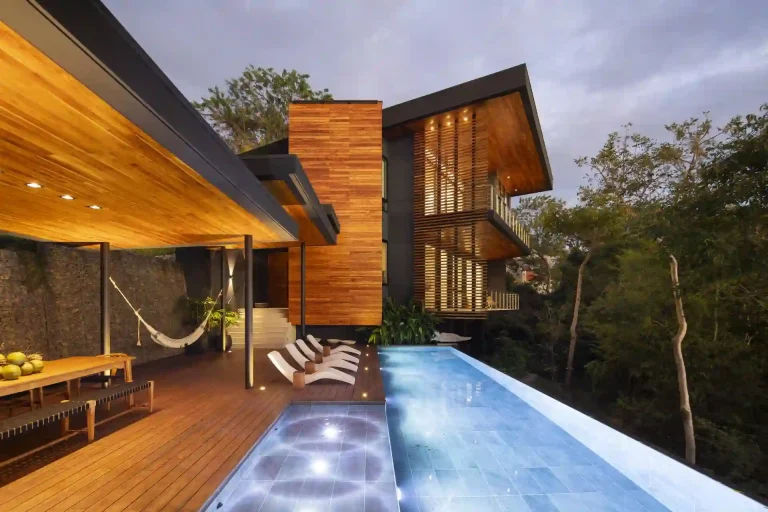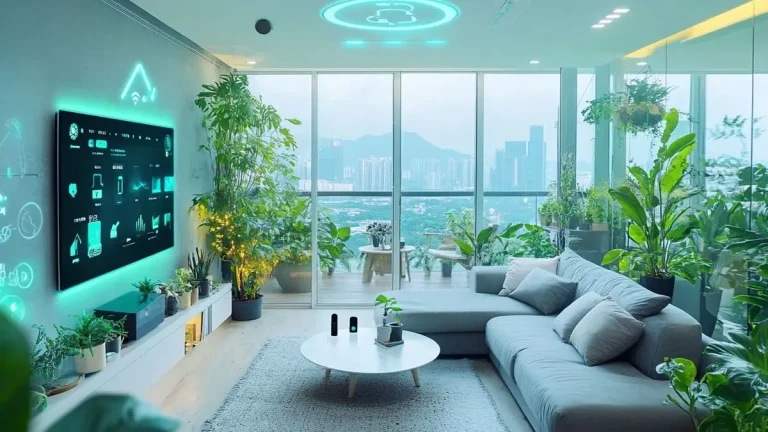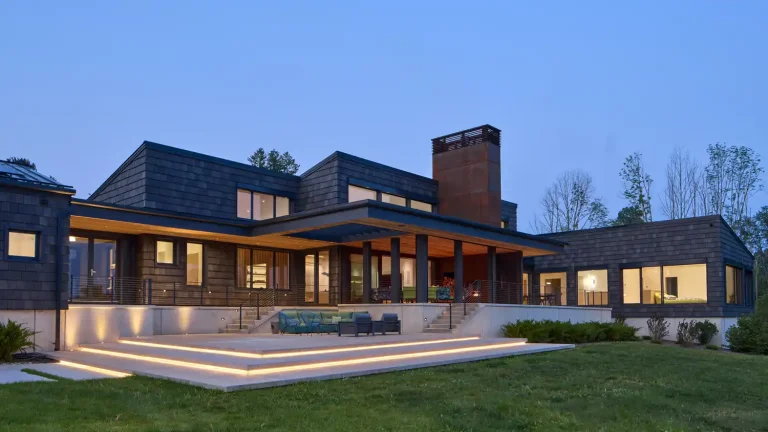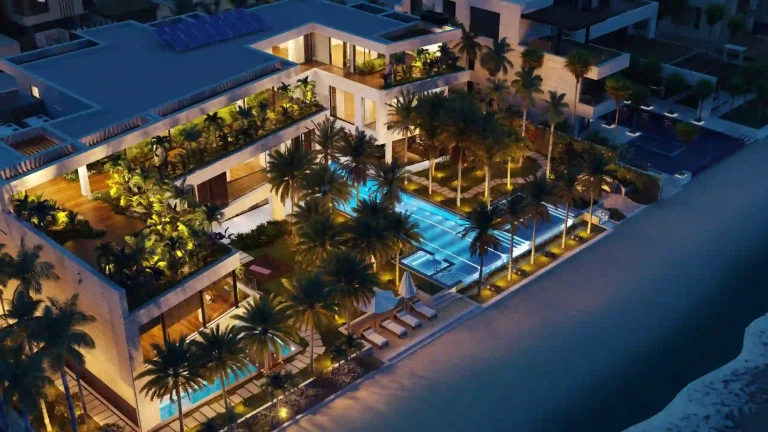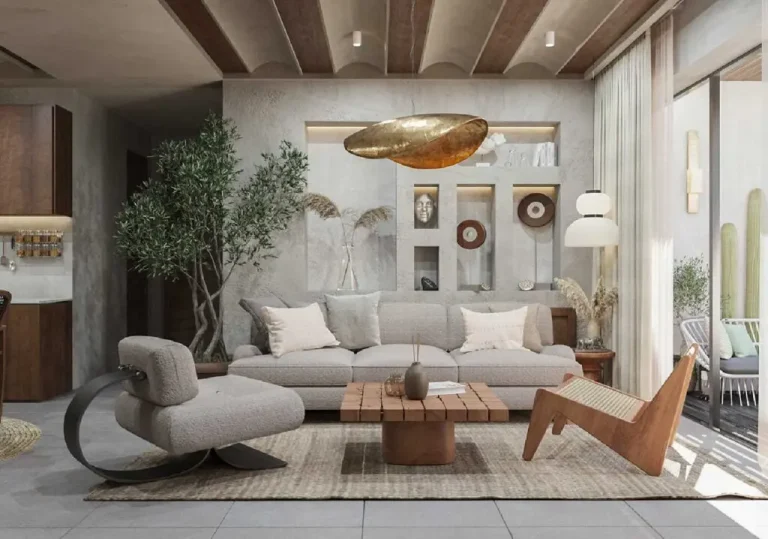Sustainable Coastal Luxury Villa Design: Building the Future of Eco-Elegant Oceanfront Living
Why Prioritize Sustainability in Coastal Luxury Villas
Coastal luxury villas occupy some of the most fragile and valuable landscapes on earth. From the Caribbean to the Mediterranean, these sites face intensifying threats from climate change, rising sea levels, saltwater intrusion, coastal erosion, and hurricanes. Sustainable coastal design isn’t just a matter of environmental ethics anymore; it’s essential for long-term resilience and operational efficiency.
A sustainably designed villa minimizes resource consumption while enhancing comfort and elegance. It harmonizes the natural beauty of the sea with intelligent architecture, achieving both exclusivity and ecological responsibility. Owners benefit from lower running costs, longer structural lifespan, and a higher property value driven by eco-conscious demand in the luxury market.
Guiding Principles for Sustainable Coastal Luxury Villa Design
Creating a coastal villa that embodies both sustainability and luxury requires a multi-disciplinary approach ch architecture, engineering, material science, and environmental psychology must all align. The following principles guide this process globally.
Site Orientation and Climate Response
A villa’s placement determines its long-term environmental performance. By orienting main living spaces to harness prevailing winds, you can minimize mechanical cooling. Coastal regions typically have consistent sea breezes. Designing with cross-ventilation corridors ensures that fresh air circulates naturally, reducing HVAC reliance.
Elevated platforms are critical in areas prone to storm surges or high tides. Villas built on raised foundations or stilts protect the structure from flooding and soil erosion. Many architects also integrate dunes, berms, or seagrass barriers to stabilize coastal edges. For example, luxury villas in Turks and Caicos now embed dune regeneration landscaping into their designs, combining aesthetic integration with shoreline protection.
Material Resilience and Low Embodied Carbon
Luxury should never compromise durability. The salt-laden air and intense UV exposure in coastal climates accelerate material decay. Choosing materials that can resist corrosion, rot, and moisture while maintaining a refined aesthetic is central to sustainable design.
Eco-engineered materials such as high-density recycled composites, FSC-certified hardwoods, and cement-fiber cladding provide excellent resilience. The goal is to balance minimal environmental impact with maximum performance. Reclaimed timber, low-carbon concrete, and composite metal panels are examples of solutions increasingly adopted by high-end coastal developers.
Energy, Water, and Ecological Systems
Beyond materials, the systems that support a villa define its sustainability performance. Incorporating renewable energy generation and water-saving technologies reduces the building’s carbon footprint dramatically.
Solar PV panels and battery storage allow villas to operate semi-off-grid, even in remote locations. Rainwater harvesting and greywater recycling systems minimize freshwater demand critical for islands with limited supply. Meanwhile, natural ventilation, biophilic design, and living roofs improve air quality and biodiversity around the property.
A truly sustainable villa design ensures that every system, from energy to water to waste, interacts with its environment responsibly.
Benefits of Sustainable Coastal Luxury Villa Design
Energy Efficiency and Independence
A coastal villa equipped with renewable energy systems (solar panels, wind microturbines, or geothermal loops) can drastically cut operational costs. Integrating passive design through deep overhangs, high-performance insulation, and reflective roofing reduces interior temperature gain and lessens reliance on air conditioning.
In high-end markets such as the Maldives or California’s Big Sur, luxury developers now promote villas that operate with near-zero energy draw from the grid. This not only ensures cost savings but also adds value as environmental regulations tighten globally.
Durability and Low Maintenance
Sustainability in coastal architecture is also about endurance. Structures that can withstand salt exposure, humidity, and storms save owners from costly repairs. Products like fiber-cement cladding, marine-grade steel, and tropical hardwoods naturally resist these challenges.
This durability translates into fewer material replacements and reduced maintenance cycles, giving homeowners long-term peace of mind and a more stable return on investment.
Wellness and Biophilic Comfort
Sustainable villas emphasize human well-being. Natural materials, ample ventilation, and daylight improve occupant health and mood. The integration of greener, green walls, indoor courtyards, and water features creates calm, restorative environments.
Studies show that biophilic elements in architecture can reduce stress and increase satisfaction, aligning perfectly with luxury living standards. Coastal sustainability, therefore, is not only about protecting ecosystems but also about enhancing lifestyle quality.
Market Prestige and Long-Term Investment Value
High-net-worth buyers increasingly prioritize environmental integrity. A luxury villa marketed as carbon-efficient and climate-resilient holds a significant competitive edge. Properties with verifiable sustainability features such as LEED, BREEAM, or Green Star certifications achieve higher resale and rental premiums.
In regions like the Seychelles, Bali, and the Amalfi Coast, this distinction often determines the success of boutique villa developments targeting eco-conscious luxury travelers.
Real-World Products for Sustainable Coastal Villas
Below are five real-world examples of products perfectly suited for sustainable coastal luxury villa design. Each supports environmental resilience, energy efficiency, and aesthetic quality, ty core elements of modern eco-luxury architecture.
1. Arrowzoom Acoustic Mineral Wool Thermal Insulation Roll
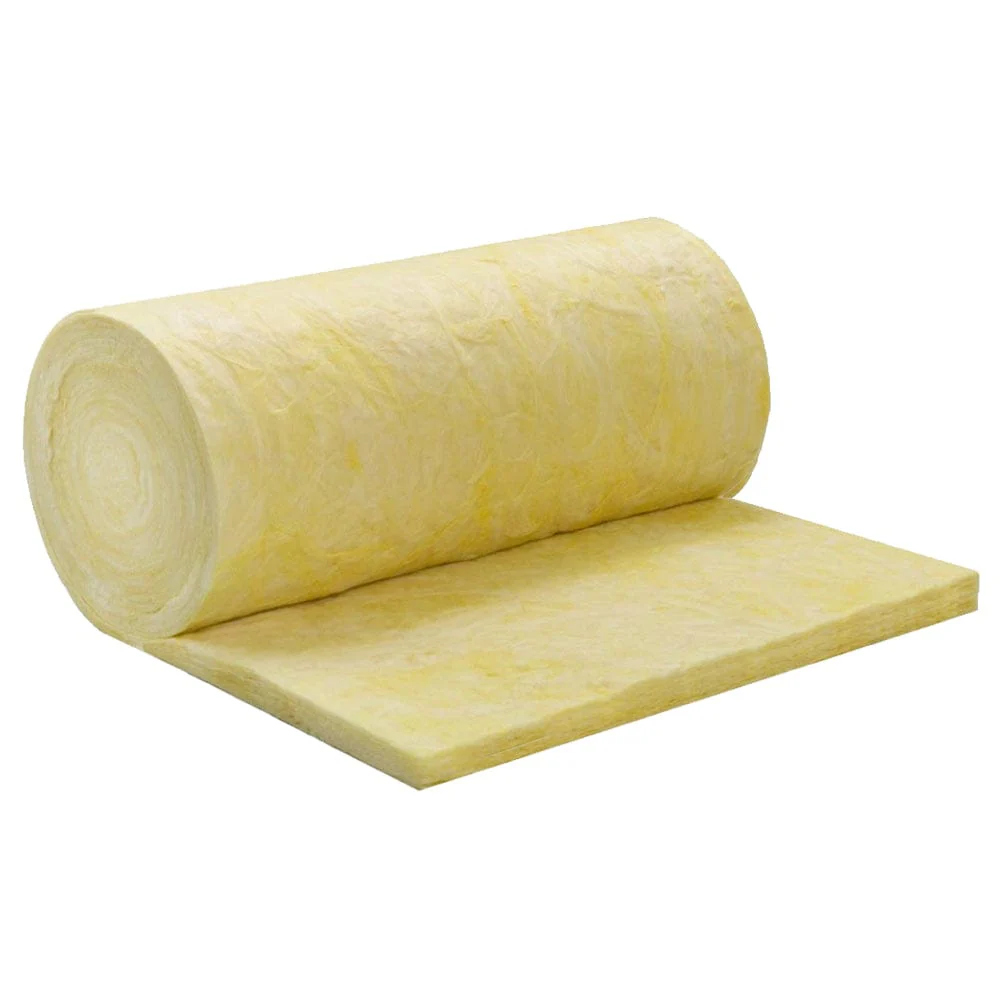
URL: Buy Arrowzoom Mineral Wool Insulation
This mineral wool insulation roll offers superior thermal regulation and sound absorption. Its non-combustible mineral fiber composition provides both fire resistance and moisture tolerance, ideal for coastal villas.
In seaside climates, internal temperature management can be challenging. The mineral wool layer forms a barrier against solar gain and humidity while preventing mold growth. Additionally, it enhances acoustic privacy, essential for high-end villas near busy coastlines or marinas.
Benefits and Use Case:
-
Drastically reduces HVAC energy consumption
-
Maintains indoor comfort naturally
-
Non-toxic, non-irritant, and fully recyclable
-
Provides strong resistance to corrosion and rot
Owners who install mineral wool in walls and ceilings report significant reductions in temperature variation up to 5°C compared to uninsulated spaces.
2. Whitecap Teak Lumber
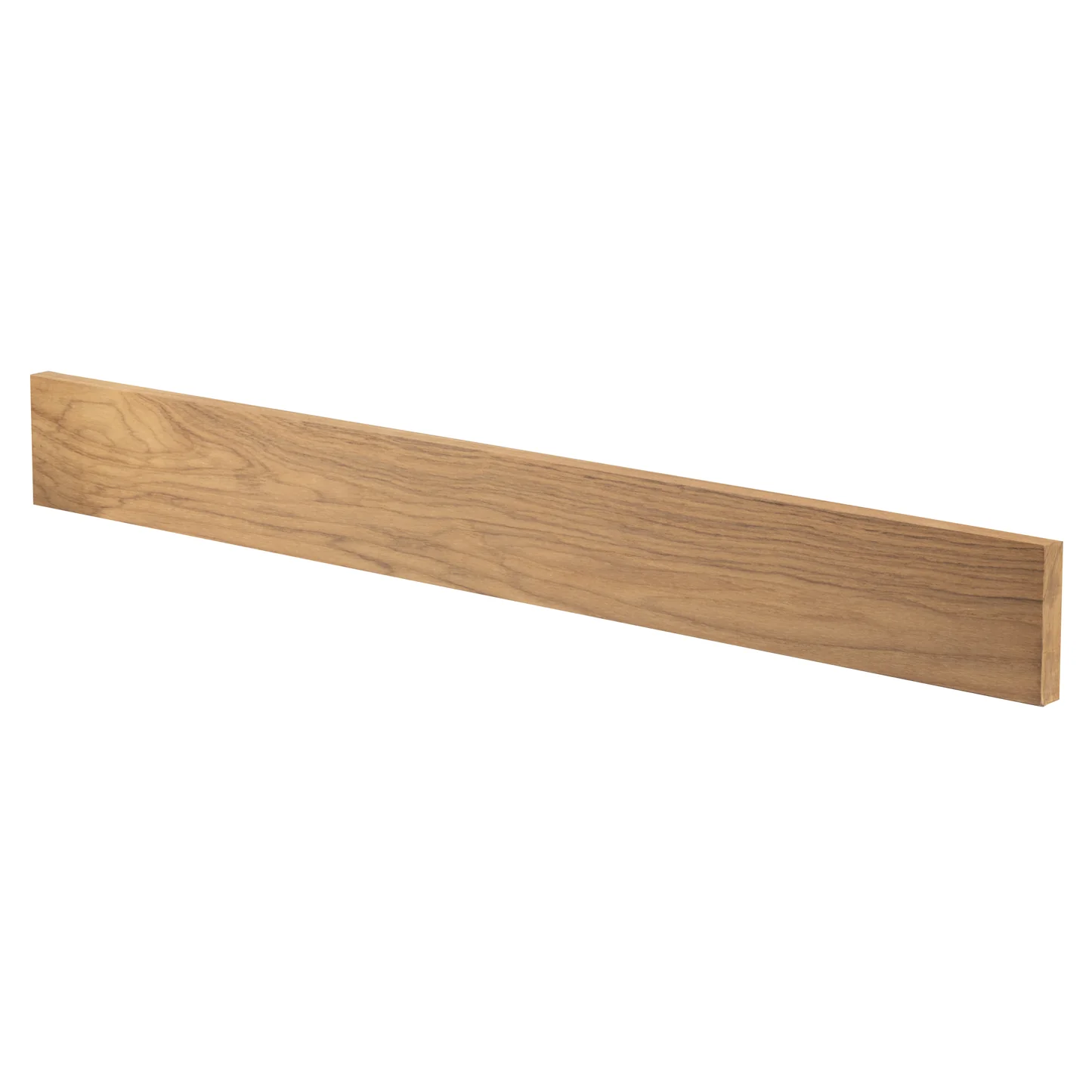
Teak is one of the world’s most premium sustainable hardwoods. Its high natural oil content protects it from salt, sun, and moisture damage, making it ideal for decks, pergolas, and exterior furniture in coastal villas.
FSC-certified teak ensures ethical harvesting and responsible forestry. In luxury villas from Mauritius to Miami, teak decking remains the hallmark of timeless elegance combined with weather resistance.
Benefits and Use Case:
-
Natural durability extends the outdoor surface’s lifespan
-
Requires minimal maintenance, simple oiling preserves luster
-
Naturally slip-resistant, perfect for pool decks
-
Harmonizes aesthetics between interior and exterior
Sustainably sourced teak gives homeowners the tactile warmth of wood without the maintenance burden of cheaper alternatives like pine or meranti.
3. Ultra Cedar Paneling

Ultra Cedar wall panels bring refined natural aesthetics to coastal villas while ensuring structural durability. Cedar’s innate resistance to decay and insects makes it ideal for façade cladding or accent walls.
Architects in New Zealand and Australia favor cedar for its dimensional stability in fluctuating humidity levels. The paneling also provides a soft, organic tone that pairs beautifully with concrete, glass, or stone textures typical in coastal architecture.
Benefits and Use Case:
-
Sustainable harvesting ensures low environmental impact
-
Excellent thermal insulation properties
-
Long-lasting coastal performance with minimal maintenance
-
Adds natural warmth and richness to interior or exterior spaces
Owners can treat cedar with clear UV sealant for enhanced protection without altering its natural hue.
4. Frost King Natural Cotton Denim Insulation
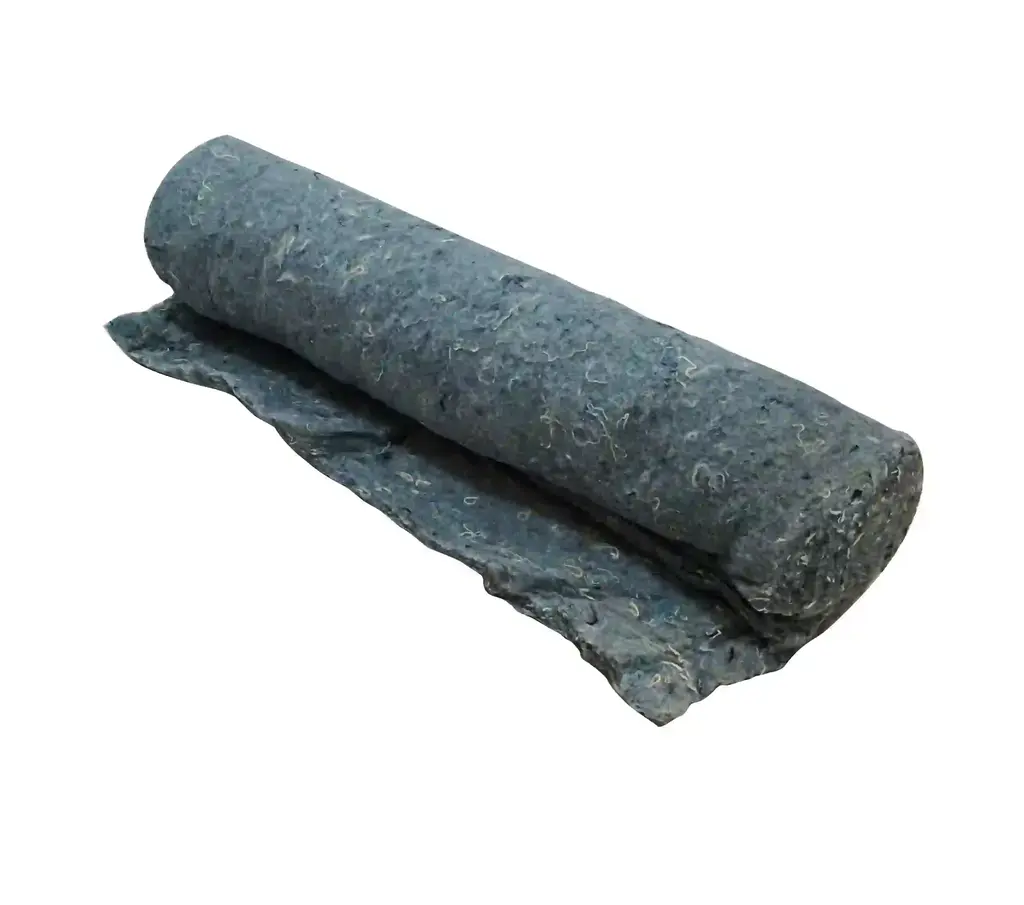
URL: Buy Frost King Denim Insulation
Frost King denim insulation is made entirely from recycled cotton fiber, an innovative alternative to fiberglass or foam insulation. Soft, safe, and eco-friendly, it fits perfectly into luxury eco-builds focused on sustainability and occupant wellness.
In coastal environments, where humidity is constant, cotton denim insulation performs remarkably well when combined with vapor barriers. It contributes to superior acoustic control and sustainable material cycles, aligning with global circular-economy design goals.
Benefits and Use Case:
-
100% recycled content; highly sustainable
-
Easy installation and maintenance
-
Provides excellent indoor air quality (no off-gassing)
-
Comfortable handling and waste recyclability
Using denim insulation showcases environmental responsibility while ensuring performance parity with conventional insulation options.
5. GRC Interlock Mahoni Wall Siding
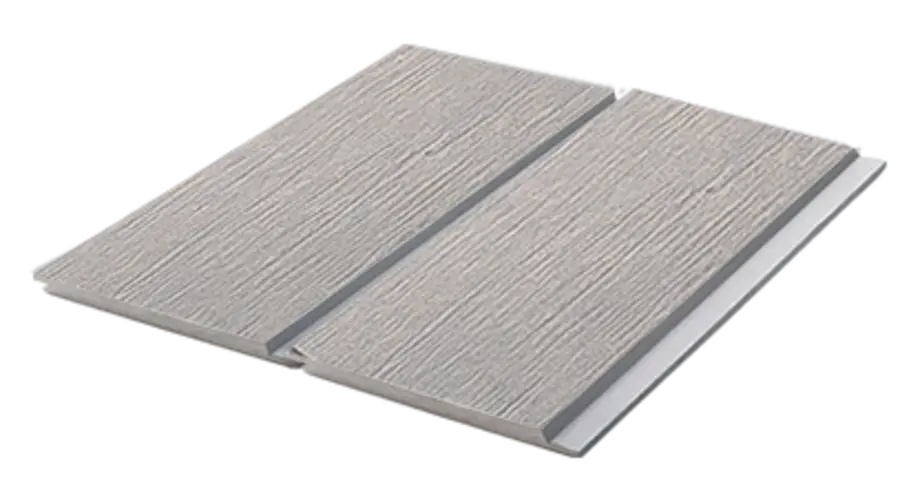
Glass Fiber Reinforced Cement (GRC) siding is one of the most resilient materials for coastal façades. It replicates the appearance of natural wood or stone while resisting moisture, corrosion, and UV damage.
Architects use GRC extensively in coastal resorts across Spain, Greece, and Southeast Asia because it eliminates frequent repainting and cracking. The interlock design improves installation precision, ensuring watertight seals and refined modern aesthetics.
Benefits and Use Case:
-
Long lifespan (up to 50 years with minimal maintenance)
-
Fire-resistant and impact-tolerant
-
Excellent salt and UV resistance
-
Can mimic wood, marble, or textured surfaces for design versatility
Combining GRC siding with teak decks and cedar interiors creates a cohesive, luxurious yet sustainable aesthetic.
Integrating Sustainable Technologies in Coastal Villa Design
Renewable Energy Systems
Luxury villas in regions like the Maldives, Seychelles, and California are increasingly built as net-zero properties. Integrating solar photovoltaic panels on flat roofs or pergola canopies allows villas to self-generate power. Hybrid systems with battery storage ensure energy reliability even during cloudy or off-peak hours.
Some developers also install geothermal heat pumps to stabilize interior temperature, taking advantage of consistent subsurface temperatures to heat or cool spaces efficiently. Combined with smart home automation, these systems maintain comfort while optimizing energy use.
Water and Waste Management
Freshwater scarcity is one of the biggest issues on islands and coastal zones. Implementing rainwater harvesting tanks, filtration, and greywater reuse systems minimizes environmental strain.
Luxury villas in Bora Bora, for instance, employ underdeck rainwater collection and filtration setups capable of supplying potable water year-round. Blackwater treatment through bio-septic or constructed wetlands also ensures minimal environmental pollution.
For waste, composting and recycling zones can be designed seamlessly into the property, often integrated behind service courtyards or utility wings.
Smart and Passive Cooling Design
In sustainable coastal villas, architecture does the heavy lifting. Cross-ventilation corridors, operable louvers, and large shaded overhangs help maintain natural comfort. Double-skin façades and ventilated roofs reduce heat absorption.
Automation can enhance this: smart sensors can open or close shutters and skylights to optimize light and temperature. Villas designed this way achieve perfect indoor conditions without constant mechanical cooling.
Use Cases: Solving Real-World Design Challenges
Use Case 1: Mitigating Storm and Salt Exposure
In the Caribbean, storm surges and salt corrosion quickly deteriorate concrete and metal structures. By using GRC siding and marine-grade fasteners, architects extend building lifespans while preserving visual integrity. Teak and cedar elements withstand wind, salt, and moisture without frequent replacement.
Use Case 2: Managing Humidity and Heat Buildup
Coastal villas in the tropics face humidity-related discomfort and excessive cooling costs. Installing mineral wool and denim insulation behind ventilated walls drastically improves interior comfort. Combined with passive shading, this reduces cooling loads by up to 40%.
Use Case 3: Sustainable Branding for Investment Villas
Developers marketing high-end villas in destinations like Bali or Ibiza leverage sustainability as a key differentiator. Using FSC-certified woods, GRC siding, and solar technologies, they position their projects as exclusive retreats, attracting global buyers and premium pricing.
How and Where to Buy Sustainable Villa Materials
To acquire these materials and systems globally, developers can follow these steps:
-
Consult Certified Suppliers – choose vendors with environmental certifications (FSC, ISO 14001, oCradle to Cradle).
-
Verify Regional Compatibility – ensure materials meet local codes and resist climate factors (humidity, salt, UV).
-
Order Directly From Global Marketplaces – platforms like Grainger, Arrowzoom, and Whitecap.
-
Collaborate with Green Building Consultants – for sourcing, specification, and certification compliance.
Frequently Asked Questions
Q1. What Makes a Coastal Villa Sustainable?
A sustainable coastal villa minimizes ecological impact by using renewable energy, locally sourced durable materials, and water-saving systems. It’s designed to endure harsh marine conditions while ensuring comfort, efficiency, and longevity.
Q2. Can Luxury and Sustainability Coexist?
Absolutely. Today’s high-end market values sustainability as part of sophistication. Using eco-technologies like solar power, biophilic design, and FSC wood enhances luxury through innovation and responsibility.
Q3. How Much Does Sustainable Design Increase Costs?
Initial construction may cost 5–15% more, but the lifecycle savings in energy, maintenance, and material replacement offset these expenses quickly. Moreover, resale and rental values for sustainable villas are typically 20–30% higher.
